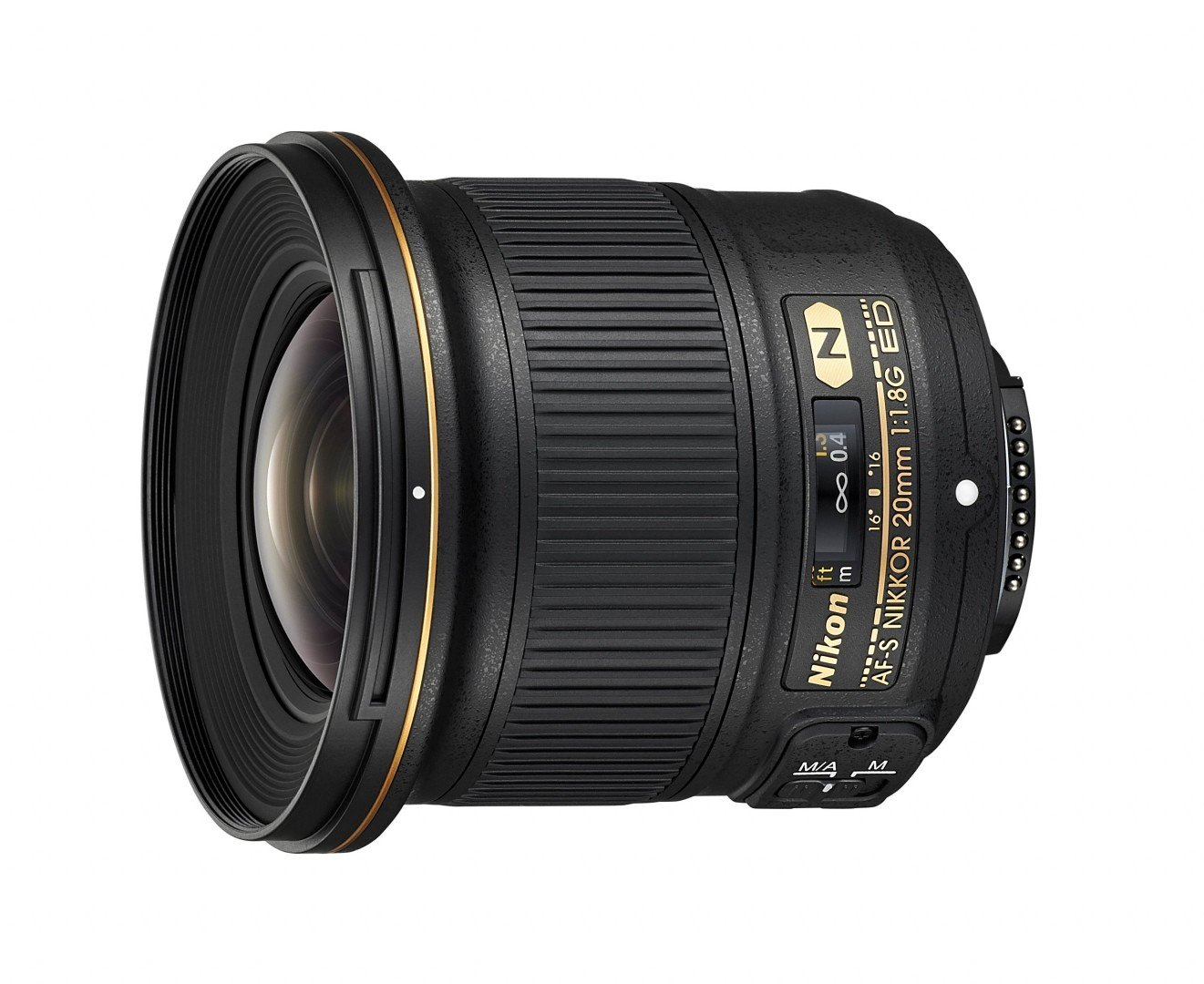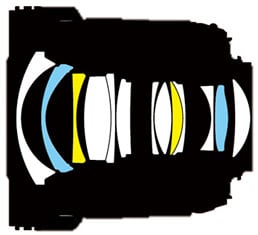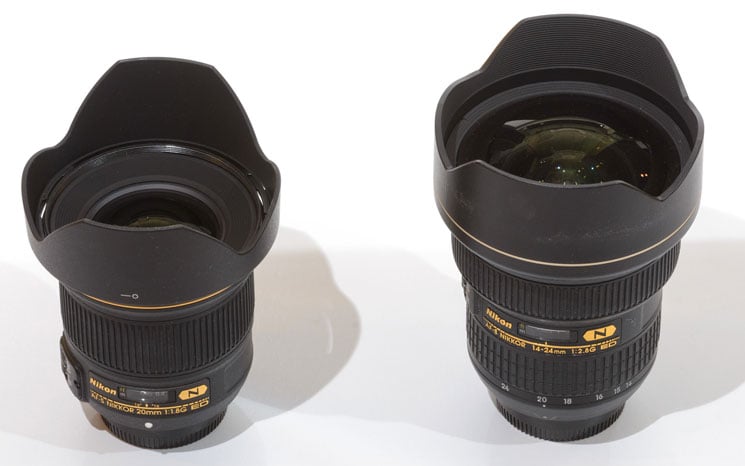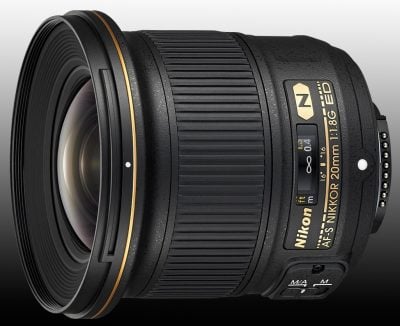Nikon 20mm f1.8G review
-
-
Written by Thomas
Intro
The Nikkor 20mm f1.8G ED is an ultra wide prime lens designed for use on Nikon FX and DX format DSLRs. It expands Nikon’s collection of 1.8G primes, joining the existing 85mm, 50mm, 35mm and 28mm f1.8 models, providing the widest coverage in the series. It also is Nikon’s largest aperture lens with a focal length shorter than 24mm. Like its 28mm sibling it carries a gold-ring denoting Nikon’s high-end optics and it is also the most expensive of the bunch.
Until now, Nikon only had a 20mm f2.8 lens which is a 25 year-old design. So with all the advances in optical design a successor was long overdue.
20mm is a very short focal length with an angle of view of 94 degrees on a full-frame/FX body. This is ideal for extreme perspectives and wide vistas in architecture or landscape shots. On a cropped-frame DX-body the lens behaves like a 30mm with a 70 degree angle of view which can be considered a short “normal” lens giving you a mild wide-angle avoiding the quirks of ultra-wide distortion. In my Nikon 20mm f1.8G review I’ll present my findings from testing this lens on a 36MP Nikon D800 body.

Facts from the catalog
As usual I’ll have a look at the technical data first. I’ve rated the features with a [+] (or [++]), when it’s better than average or even state of the art, a [0] if it’s standard or just average, and [-] if there’s a disadvantage.
 |
Most features are compared to Nikon’s AF-S 28/1.8G.
Size (diam. x length): 72 (body) / 82 (front) x 84 mm (2.8/3.2 x 3.3 in.). A little larger than the 28/1.8G at 73 x 81 mm. [0]
Weight: 355 g (12.6 oz). 25g heavier than the 28/1.8G. [0]
Optics: 13 lenses in 11 groups vs. 11 elements in 9 groups for the 28/1.8G. This is quite some glass even for a wide-angle lens. The lens contains two aspherical and two special glass element plus Nano-coating. The 28/1.8G has two aspherical elements plus Nano-coating too. [+]
Closest focus distance/max. magnification: 20 cm (0.66 ft.) / 1:4.0 (measured). This is actually a quite nice magnification that this lens can achieve and is similar to the 28/1.8G which goes to 25 cm and 1/4.5. [+]
Filter-thread: 77mm. That’s one of the professional standard sizes. The 28/1.8G has a 67mm filter-thread. [+]
Image stabilization: No, same as any other fixed focal large aperture lens from Nikon or third parties below 200mm focal length. [0]
AF: AF-S with SWM (silent wave motor), so it does work on Nikon D3x00/D5x00-bodies. Manual-focus override by simply turning the focus ring [+]
Covers full frame/FX or smaller = very good [+]
Price: around 800 EUR new (incl. 19% VAT). That’s quite a mark-up over the 28/1.8G which is at around 600 EUR. It makes the lens the most expensive f1.8G prime in Nikon’s line-up – but there’s not much competition around. [0]
Comes with a flexible lens pouch (no padding, no strap), the lens-shade is included, reversible for transport, and the lens-caps are standard Nikon’s. [0]
Distance information is relayed to the camera, so Nikon bodies and flashes can do all the advanced exposure-related stuff with this lens. [+]
Aperture ring = no, just like all competitors with AF. [0]
Sealing: yes! The standard Nikkor rubber grommet at the lens-mount – but no further weather-sealing. [+]
The score in the “features-department” is 0[-]/6[0]/4[7]. This lens ticks almost all important boxes, and the price may come down over time.
Alternatives
– A lens between 18 and 21mm with an aperture of at least f/2, an image-circle that fills an FX-sensor, and auto-focus? Well, there is really only the Sigma AF 20/1.8 EX DG Asp RF. Its price is listed as 629 USD but Sigma Germany doesn’t list the lens any more and availability in German shops seems limited, partially selling for 750 EUR. The Sigma has been reported to deliver very high center resolution which drops off considerably towards the corners of the full frame unless you stop down to f5.6.
– If you accept f2.8 as max aperture there’s the Zeiss ZF.2 Distagon T* 21/2.8 ) but that costs 1600 EUR and has manual focus only plus the older AF Nikkor 20/2.8D for around 580 EUR. But that’s it for fixed focals.
– Then there are f2.8 wide-angle zooms like the Tokina AT-X Pro 16-28/2.8 FX (620 EUR), the Nikon AF-S 17-35/2.8D IF-ED (1700 EUR) and finally the Nikon AF-S 14-24/2.8G ED (1600 EUR, see my Nikon 14-24 review). Plus Tamron has announced the SP 15-30/2.8 Di VC USD with image stabilization at an unknown price. With the f2.8 zooms you give up 1.3 stops of max aperture but gain in flexibility to chose your angle of view.
| |
 | |
|
Comparing a fixed-focal to a zoom certainly is more like an apples-to-oranges comparison, But if you’re looking into high performance ultra-wide-angle lenses that auto-focus and fill a full-frame sensor it doesn’t seem too far-fetched to pitch both lenses against each other.
Focus and build quality
Focus accuracy and repeatability is critical to consistently produce sharp shots, especially with large aperture primes. Consistency of auto-focus (the accuracy of focus on the same subject after repeated focus-acquisition) of this lens is very good (98.1% as measured in FoCal) with only very slight variations and no real outlier over a series of 40 shots. The lens focuses in around 0.6 sec from infinity to 20 cm, which is pretty fast. The 28/1.8G does this in 0.7 sec.
The focus ring has some slack/play between its movement and the focus-action which is a nuisance for manual focusing. And the throw of around 80 degrees is pretty short for accurate focus wide open. The focus ring has a broad 2.4 cm wide profiled rubber surface that is easy to grip and moves easily albeit with a clear geared feeling. AF-operation is barely audible from the outside. If you record video with the built-in microphone focus-movement starts and stops with almost no “clack” and the AF-drive itself is also not too annoying. Focus breathing is visible: things in the background become clearly larger the closer you focus. That may annoy videographers.
The lens has a weather sealed metal lens-mount and seven rounded aperture blades. The outer barrel is plastic and the lens-hood sits tight.
Now it’s time to check out some results in my Nikon 20mm f1.8 quality and Nikon 20mm f1.8 sample images pages, or if you’d like to skip to chase, head straight for my verdict!
 Good points: Good to very good performance at closer distances even wide open; quiet and reliable AF operation; weather sealing at the lens-mount.
Bad points: Green outlining/haloing in the background when shooting wide open; needs stopping down to f5.6 to achieve critical sharpness across the full frame.
Good points: Good to very good performance at closer distances even wide open; quiet and reliable AF operation; weather sealing at the lens-mount.
Bad points: Green outlining/haloing in the background when shooting wide open; needs stopping down to f5.6 to achieve critical sharpness across the full frame.



